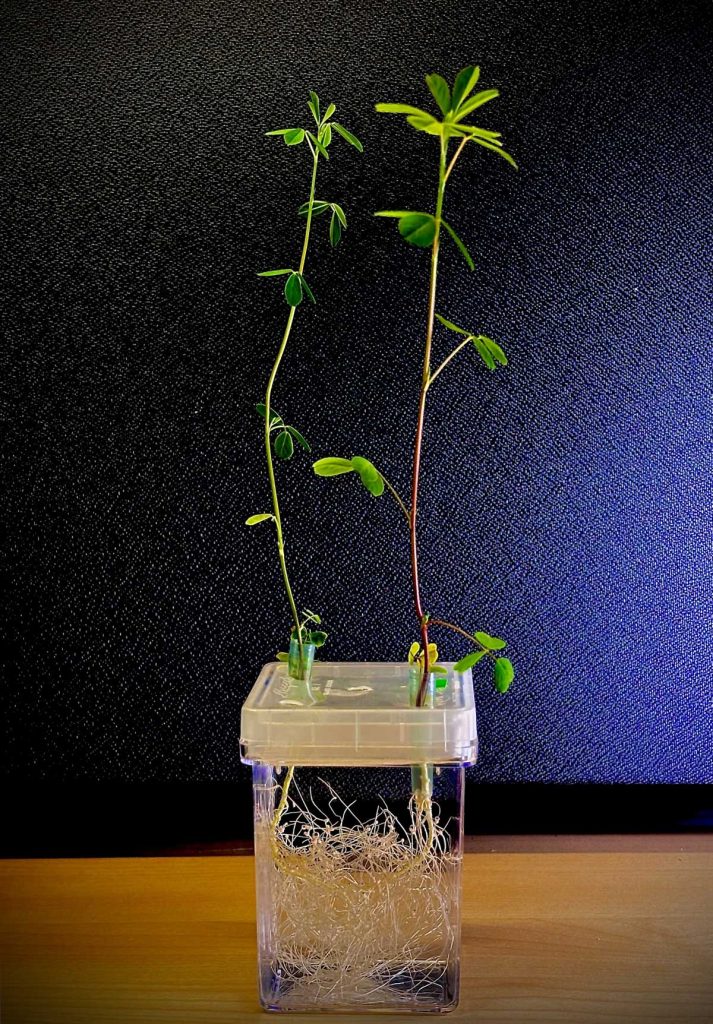Submission 2024
| Submitted by: | Oshadhi Athukorala Arachchige |
| Department: | Agriculture, Food and Nutritional Sciences (AFNS) |
| Faculty: | Agricultural, Life & Environmental Sciences (ALES) |
The image shows the development of root nodules in a legume plant (alfalfa) grown within a hydroponic nutrient system. These nodules are the result of a symbiotic relationship established with Rhizobium bacteria, aimed at fixing atmospheric nitrogen which can reduce dependency on agrochemicals, promoting long-term sustainability and productivity. The suboptimal nodulation can hinder nitrogen fixation, necessitating effective strategies to optimize it. In the pursuit of long-term sustainability and productivity in agriculture, there’s been a continuous exploration of different soil amendments. Among these, humic-based products (HPs) emerge as noteworthy organic amendments abundant in humic acid, renowned for their role as vital plant biostimulants.
My research explores the influence of humic acid extracted from Humalite, a humic acid-rich substance from southern Alberta, Canada, on legume-rhizobia interactions. This investigation aims to unlock its potential for enhancing nitrogen-fixing efficiency in legumes.
Was your image created using Generative AI?
No.
How was your image created?
This photo was taken from one of my experiment setups which is currently located in the tissue culture room, plant-microbe lab at the Department of Agricultural, food, and Nutritional Science. This was taken from my iPhone 15 and color-enhanced manually using iPhone 15 built-in features.

